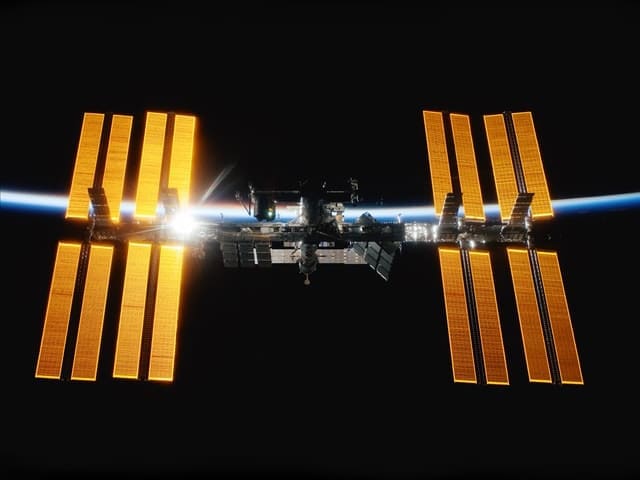CubeSat platforms have been dominating the space industry. We’ve put together information on benefits, applications, a bit of history, and much more! Let’s learn more about these low-cost imaging systems in this article.
Our planet has seen its fair share of hurricanes, wildfires, and nuclear threats; therefore, it is not difficult to see the value of placing a camera for CubeSat to survey the earth with frequent updates. However, there are quite some cons of traditional satellites – for instance, they can easily cost more than millions of dollars. Additionally, they also have to cover entire orbits, which means they may not see the same target for weeks at a time.
CubeSat satellites have proven to be worth the money and effort. In today’s time, more than 200 small satellites are orbiting the earth; in fact, it is estimated that more than 50 satellites were launched per month at one time.
What is a CubeSat satellite?
Before diving further into this article, let us first begin by understanding what the CubeSat is. A CubeSat satellite is a miniature spacecraft that measures roughly 10cm on all sides; this measurement is denoted as Units or U.
When you look at artificial satellites, they come in a wide range of sizes. The size of the CubeSat satellite matters because making them smaller has allowed cheaper launch and assembly.
When you look at the CubeSats, it is just like any satellite. These spacecraft are custom-built based on the requirements of the mission; in most cases, they have three things in common:
- A radio communication system and an antenna will receive and send information to and from earth stations.
- A power source like a battery or a solar panel.
- A computer that will execute all the mission requirements and ensure that it functions properly.
Most of these satellites are made of aluminum and can easily hold the components mentioned above. Some can hold other components like scientific payloads, sensors, and/or a CubeSat camera. Additionally, the solar panels and the antennas fit on the structure’s exterior.
How Are CubeSats Launched?
Usually, CubeSat satellites deploy via Poly Picosat Orbital Deployer (P-POD) or a Nanoracks CubeSat Deployer (NRCSD).
The P-POD allows the CubeSat satellite to separate from the launcher and carry three standard satellites. On the other hand, the NRCSD is a CubeSat deployer that will electrically and mechanically isolate the satellites from the ISS, ISS crew, and the cargo vehicles; this deployer system is self-contained qualified for NASA ISS flight safety. The NRCSD system can easily hold up to six Unit sizes of CubeSat satellites.
Overall, CubeSats need to be compatible with the requirements of either of these deployer systems, which include operational, electrical, mass, dimension, and general.
What Are Some Benefits of CubeSat Cameras And Satellites?
CubeSats have already proven their worth as tools for education. Additionally, there are also some other benefits of the CubeSat for various applications like:
- An affordable choice for demonstrating various types of technologies, alongside novel techniques like docking and rendezvous, close inspection, or formation flying.
- A driving force behind the various techniques like miniaturization of systems, providing a new approach to integration and packaging, system on chips, embedded propulsion, and multi-functional structures.
- As a means for deploying various types of small payloads, like optical cameras or very compact radio receivers, where potential performance deficit can be compensated by many satellites involved in swarms or constellations.
- Perform different in-site measurements with CubeSat cameras. Obtaining earth and space observation measurements includes charged particle flux, magnetosphere, ionosphere, and thermosphere.
- As a means for space exploration, for example, a fleet of satellites can rendezvous at several targets at a time. Or, a swarm of satellites carried by a larger spacecraft can go to far-off destinations like Mars, comet/asteroid, Moon, etc.)
What Are Some Applications Of CubeSat Cameras?

A lot of people do not understand why to use the CubeSat camera. In the past 15 years, these satellite and camera systems have shifted the paradigm of the space and satellite industry. They are smaller than conventional satellites, which significantly reduces costs and lowers the risk of failure. Hence, these satellites have a lot of applications. Let us look into some:
1. Earth Observation
The collection and interpretation of data are significant for the correct development of sustainable economies and the management of natural resources. These CubeSat platforms can also help understand human impact on the overall environment, geology, forest, and agriculture.
2. IoT And Communication
Small satellites have helped develop and spread IoT (Internet of Things) globally. CubeSats have helped connect the world from space. Most networks and objects today require global communications and connections.
3. Logistics And Geolocation
Handling and locating assets like vehicles, ships, and aircraft is nearly impossible, particularly in areas with no land coverage. Since CubeSats are located in space, they offer a global vision. These constellations can provide immediate monitoring from any part of the world.
How CubeSat Camera Works?
In this section, we will learn how the CubeSat camera works. CubeSat cameras are very similar to digital cameras; however, they are more sensitive and challenging to work in extreme conditions. These cameras have special light-sensitive devices instead of film, similar to computer chips. They are known as charge-coupled devices, or CCDs — you will find millions of tiny pixels on each CCDs.
When the CCDs click a picture, the light pattern gets converted into a pattern of numbers. The higher the number, the brighter the parts of the picture. Black is represented by zero. Based on how dark or bright the shade of grey is, the CCD will be given a number. In the case of color cameras, the images are passed through differently-colored filters; each filter will only pass a certain color.
On earth, the computers will combine all the data from the images; once the compilation is done, you will see all the shades of grey or the original colors.
Sending CubeSat cameras in space is perhaps the best use of CubeSat cameras today. With the help of these images, you will get a fair idea of the environment on earth and aid in space exploration. CubeSats are the next big thing today because of the wide range of benefits and applications associated with them. As technology continues to evolve, so will these satellites.
Featured Photo by NASA on Unsplash




